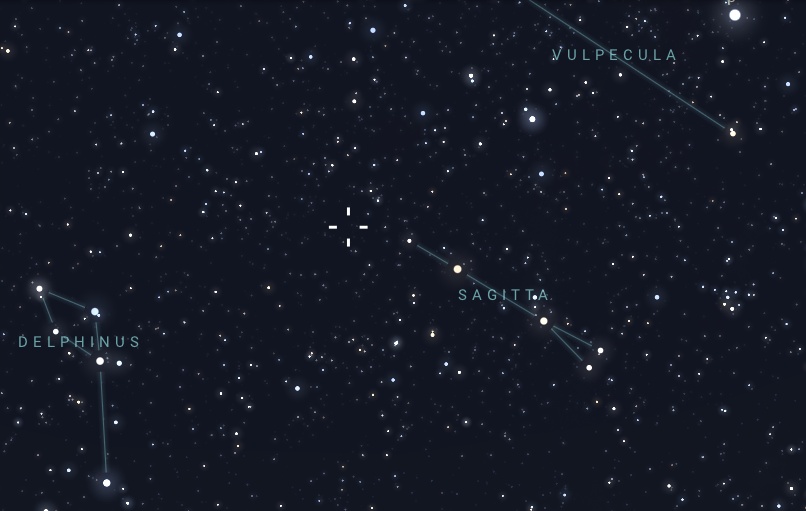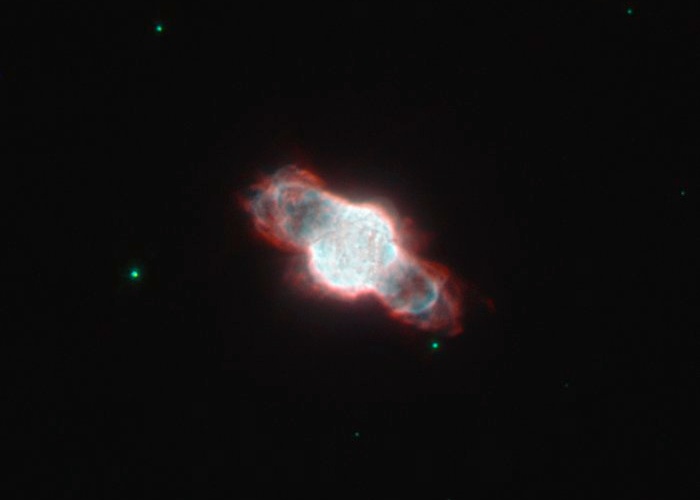NGC 6886 is a planetary nebula located in the constellation Sagitta in the northern hemisphere, and estimated to be approximately 11,000 light-years away from Earth. It was discovered by the English astronomer William Herschel on September 2, 1784. Here’s an overview of the nebula:
Appearance and Composition
NGC 6886 exhibits the characteristic features of a planetary nebula, with a bright central star surrounded by a halo of ionized gas and dust. Its overall appearance can vary significantly based on observing conditions, such as atmospheric clarity and light pollution, as well as the resolution of the telescope used to view it. Under optimal conditions, the nebula can reveal intricate structures and a delicate, shell-like form.
Like other planetary nebulae, NGC 6886 is primarily composed of gases, including hydrogen and helium, along with trace amounts of heavier elements. The nebula’s vibrant colours are the result of the ionization and subsequent emission of these gases by the central star. This star is a white dwarf, the hot and dense remnant left after the star has expelled its outer layers during the late stages of its life cycle. The nebula’s outer shell can appear as a broad, circular ring or disk surrounding the central star, similar to Saturn’s iconic rings.
The central white dwarf emits intense ultraviolet radiation, which ionizes the surrounding gas, causing it to glow in various colours. The interplay of these emissions contributes to the nebula’s visual diversity, allowing observers to appreciate its unique characteristics through powerful telescopes.
As NGC 6886 evolves, its outer layers continue to expand, enriching the surrounding interstellar medium with essential elements. This ongoing process not only plays a crucial role in stellar and planetary formation but also highlights the importance of planetary nebulae in understanding the life cycles of stars and the chemical evolution of the galaxy.
Observation
NGC 6886 has an apparent magnitude of approximately 11.9, making it very faint and requiring a telescope for effective observation. While it can be seen from both sides of the celestial equator, observers in the northern hemisphere have a better view, as Sagitta is positioned higher in their sky, particularly during the summer months.
The nebula is best observed from June to October (summer through early autumn). During these months, Sagitta, along with NGC 6886, is prominently positioned in the night sky, enhancing its visibility and accessibility. However, visibility can vary based on factors such as local weather conditions, light pollution, and the observer’s specific location.

In contrast, observers in the southern hemisphere may have a more limited view of the nebula, as it appears lower in the sky due to its location near the northern celestial hemisphere. Nonetheless, it can still be observed from southern latitudes during the appropriate viewing seasons.
NGC 6886 is an intriguing object for astronomers studying the late stages of stellar evolution and the dynamics of planetary nebulae. Its relatively faint apparent magnitude and distinctive appearance make it a challenging yet rewarding target for observation.



